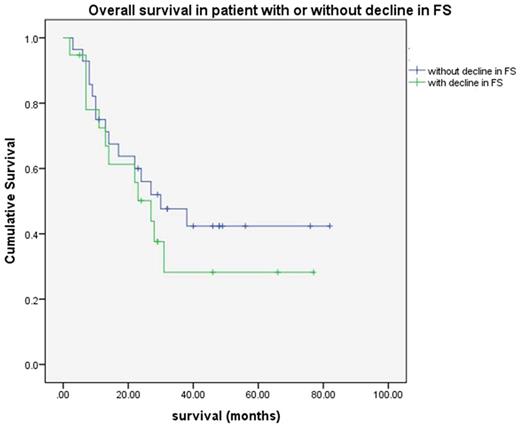Abstract
Introduction: Whereas the risk of anthracycline-associated chronic cardiomyopathy is associated with a cumulative life time dose of more than 500mg/m2, it is less clear whether anthracycline exposure at lower doses is associated with acute toxicity. Antracyclines are typically given as part of the treatment schedule in newly diagnosed patients with acute myeloid leukemia (AML), and acute toxicity is of particular concern in patients who are candidates for hematopoietic stem cell transplantation (HSCT). In these patients, even transient decrease in cardiac function might affect transplant outcome. However, it is currently unknown whether reduced anthracycline dose causes less cardiac toxicity. Herein we aimed to study the short-term cardiac toxicity associated with anthracycline therapy given during induction in patients with AML who subsequently underwent HSCT.
Methods: Single center retrospective analysis of patients with AML who received induction therapy and underwent HSCT. We included all patients with AML who received induction and underwent HSCT for whom echocardiography was available pre- and post- induction therapy. We excluded patients who did not receive anthracyclines during induction. We used the AML ELN 2017 guidelines for risk stratification. The regimen used for induction therapy in most AML patients in our center is "3+7", which includes daunorubicin at a dose of 60mg/m2/day or 90mg/m2/day on days 1-3, and cytarabine at a dose of 100mg/m2/day on days 1-7.
Results: Sixty seven patients that received induction therapy and underwent HSCT between 2007 and 2016 were included in this analysis. The median age at diagnosis was 59 years (range 18-73) and 37 (55%) were males. Most patients had either intermediate (N=28, 42%) or high risk (N=24, 36%) AML. Thirty eight of the patients (56.7%) had de novo leukemia, while the rest of the study population had secondary leukemia. Nineteen patients (29%) received 90mg/m2/day and 42 (63%) received 60/mg/m2/day or an equivalent dose of idarubicin (N=3). Thirty four patients (51%) received salvage chemotherapy, most (N = 29, 43%) with anthracycline-containing regimens.
The systolic function was assessed by ejection fraction (EF) and fractional shortening (FS). In 17 patients (26%) the post-induction ejection fraction declined by at least 10%. This change was temporary in 14% (N = 9) and permanent in the remainder. Men were more likely to experience acute reduction in EF (P = 0.02). Conversely, the presence of cardiovascular risk factors did not significantly increase the likelihood of post-induction systolic dysfunction. Likewise, while the post-induction change in FS varied considerably, it was not associated with cardiovascular risk factors. In 18 patients (29.5%) the diastolic function deteriorated. Gender or cardiovascular risk factors were not associated with increased likelihood of developing diastolic dysfunction. Remarkably, patients who developed diastolic dysfunction had improved survival outcome (44.65 compared to 32.9 months, p=0.073), raising the possibility that an increase in diastolic cardiotoxicity is associated with improved efficacy of anthracycline treatment. Similarly, less patients who developed diastolic dysfunction required salvage chemotherapy (53% vs. 42%). On the other hand, patients who developed systolic dysfunction had an inferior survival outcome (Graph1). Higher doses of anthracyclines were associated with a significant decrease in FS (P = 0.043) and a tendency towards EF decline ( P = 0.1), however it was not associated with a decrease in diastolic function.
Conclusions: Approximately one quarter of patients who receive anthracycline-based induction will develop transient or long-lasting decrease in systolic cardiac function. The anthracycline effect is dose dependent and is higher with a 90mg/m2/day dose than with 60mg/m2/day. The deterioration in cardiac function translated into inferior survival outcome. Recent studies have shown that daunorubicin at a dose of 90mg/m2/day or 60mg/m2/day may have comparable efficacy in the induction regimen for AML. Our data should be taken into account when determining anthracycline dose in this setting, especially in male patients who are candidates for allogeneic transplantation, since even transient cardiac dysfunction might increase transplant-related morbidity and mortality.
No relevant conflicts of interest to declare.
Author notes
Asterisk with author names denotes non-ASH members.


This feature is available to Subscribers Only
Sign In or Create an Account Close Modal